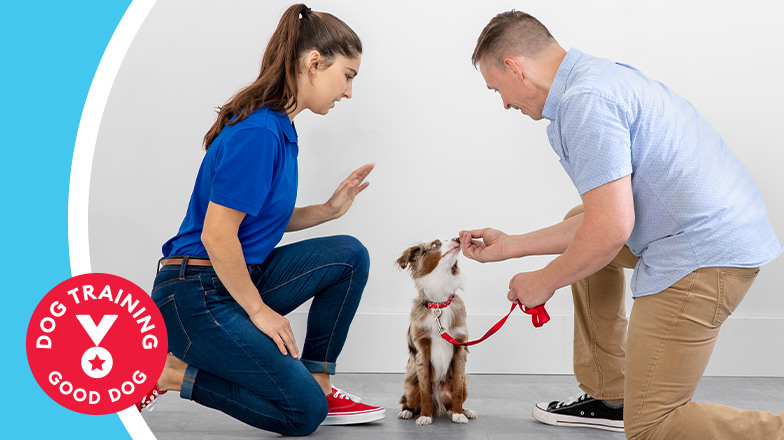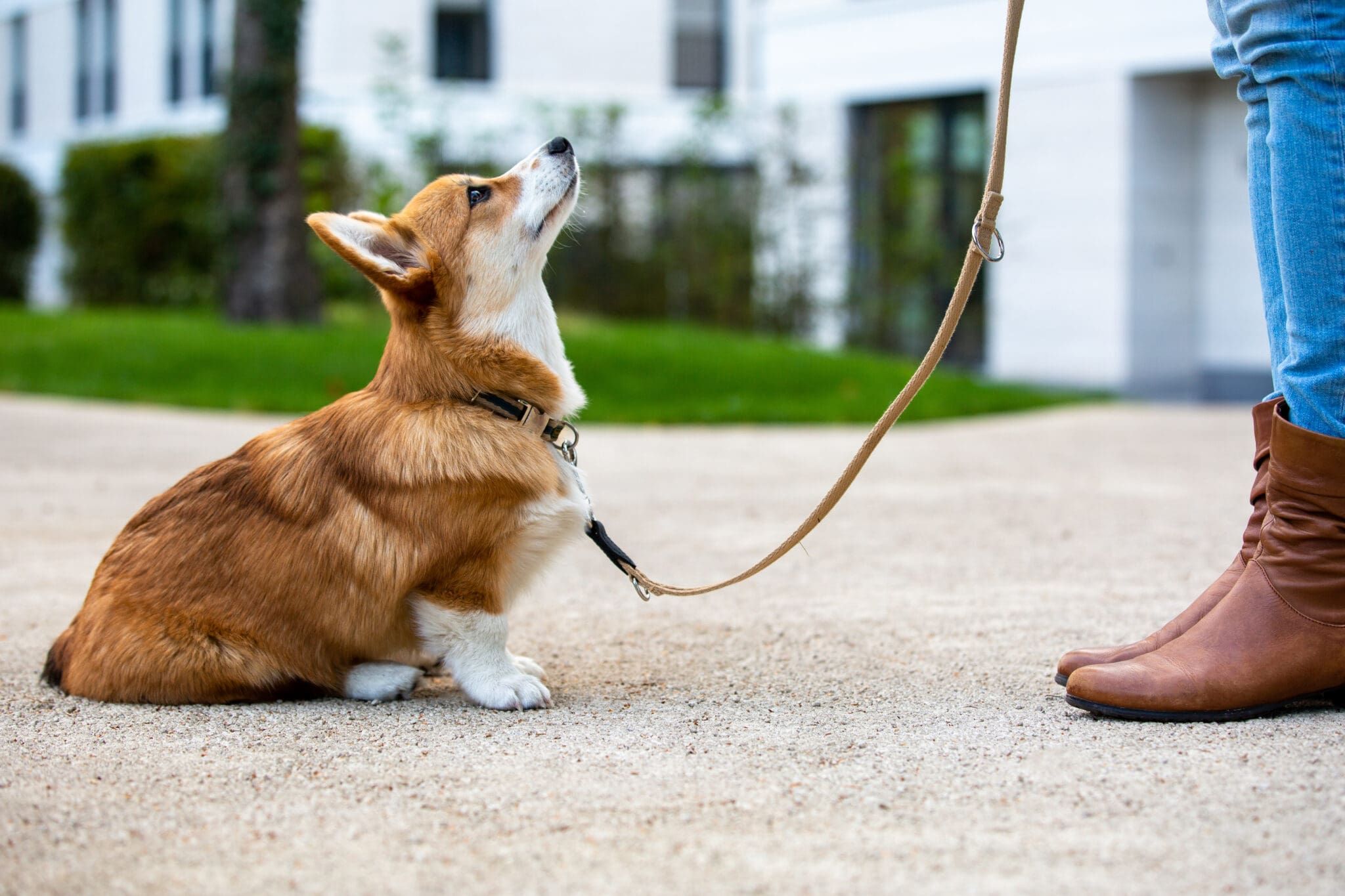Leading Dog Training Strategies Every Proprietor Should Know

Positive Reinforcement Methods
Using positive support methods is necessary for efficient canine training, as it fosters a relying on bond between the pet and the fitness instructor. This method concentrates on fulfilling preferable behaviors instead than penalizing unfavorable ones, developing a setting for discovering. Rewards can include deals with, praise, or playtime, which encourage pet dogs to repeat the behaviors that earn them these incentives.

Furthermore, this technique enhances the pet's excitement for training sessions. When pets link training with positive experiences, they are extra involved and receptive. Beyond immediate therapy, favorable support encourages a collaborative connection between the pet dog and instructor, reducing anxiety and worry
To optimize effectiveness, it is vital to supply incentives without delay, ensuring the dog connects the behavior with the support. Essentially, favorable support strategies not just produce better-trained pet dogs however likewise promote a harmonious partnership in between pet and proprietor.
Remote Control Training Approach
The remote control training approach is a very reliable strategy that builds upon the principles of positive support by including a distinct sound to mark desired behaviors. This method utilizes a small portable tool that generates a clicking sound, allowing trainers to connect with their pets in a prompt and clear way. When a pet dog performs a habits that the owner wishes to urge, the remote control is triggered, complied with by a reward, usually in the type of treats or appreciation.
The secret to successful remote control training exists in uniformity and timing. It is essential to click at the exact moment the wanted habits happens, ensuring that the pet dog connects the noise with the action and the succeeding benefit. This method not just improves interaction however likewise cultivates a more powerful bond between the proprietor and the pet dog, as it motivates engagement and communication during training sessions.
Remote control training can be put on a variety of commands and actions, from standard obedience to a lot more complex methods. Its flexibility and performance make it a preferred technique among professional fitness instructors and pet proprietors alike, leading the way for a responsive and trained canine friend.
Leash Training Basics
Reliable leash training is necessary for ensuring a pleasurable and secure walking experience for both pet dogs and their proprietors. A level collar might work for some dogs, while others may benefit from a harness that minimizes drawing.
Introduce your dog to the leash slowly, enabling them to discover it in a comfortable environment. Technique loose-leash strolling once they you could try this out are accustomed. This entails rewarding your dog for walking beside you instead than pulling ahead. Use treats and praise to strengthen preferred habits, and make sure to stay assertive and calm.
If your dog begins to draw, quit strolling promptly. Furthermore, technique different walking environments to aid your pet dog adapt to distractions.
Normal technique will solidify your dog's understanding of chain etiquette. Bear in mind that leash training is an ongoing procedure; persistence and uniformity will certainly yield the very best outcomes, cultivating a favorable experience for both you and your canine friend.
Socializing Strategies
Socialization is a vital facet of pet training that need to preferably start during puppyhood yet can be useful at any type of age. Efficient socializing assists pet dogs establish confidence and decreases the possibility look at this website of behavioral concerns. To execute successful socializing approaches, reveal your pet to a selection of settings, people, and other animals.
Start with controlled setups, such as pup courses or arranged playgroups, where young pets can engage securely. Slowly introduce your dog to brand-new experiences, consisting of various noises, go to my blog surfaces, and tasks. Make certain these experiences are rewarding and favorable to develop a complacency.
For grown-up dogs or those lacking direct exposure, start with low-stress situations. Short, positive interactions with tranquil dogs and friendly people can produce positive associations. Utilize treats and appreciation to strengthen desirable behaviors during these experiences.

Consistency and Perseverance
Acknowledging the importance of uniformity and patience in pet dog training is vital for attaining long-term outcomes. Inconsistent training can lead to confusion, making it tough for the canine to realize habits or commands, ultimately preventing development.
In addition, perseverance is a crucial part of reliable training. Canines, like humans, learn at their own speed. Some might comprehend principles swiftly, while others may take much longer. It is essential for proprietors to remain encouraging and calm, reinforcing favorable habits without resorting to irritation or punishment. This cultivates a relying on partnership in between the pet dog and proprietor, motivating a more enthusiastic and eager student.
To grow consistency and perseverance, develop a regular training regular, use the very same commands, and guarantee that all relative use the same training concepts - Dog training. By doing so, you create a steady environment for learning, permitting your dog to grow and develop right into a well-behaved buddy
Verdict
To conclude, reliable canine training strategies, such as favorable reinforcement, clicker training, and proper chain training, are necessary for promoting a healthy owner-dog connection. Additionally, carrying out socializing techniques and keeping uniformity and patience throughout the training process adds substantially to a canine's total wellness. By integrating these approaches, pet owners can help with the growth of well-adjusted, loyal pets, eventually enhancing the top quality of life for both the pet and the owner.
Amongst the most prominent techniques are positive support, remote control training, and chain training, each offering distinct advantages that contribute to a mannerly dog. As we check out these basic techniques, it becomes evident that mastering their nuances can dramatically influence the training experience and the dog's general actions.Utilizing favorable support strategies is necessary for reliable canine training, as it fosters a trusting bond in between the instructor and the pet.In conclusion, reliable pet training strategies, such as favorable reinforcement, clicker training, and proper chain training, are essential for cultivating a healthy and balanced owner-dog partnership. By incorporating these techniques, canine owners can facilitate the development of well-adjusted, loyal family pets, eventually improving the quality of life for both the proprietor and the pet dog.